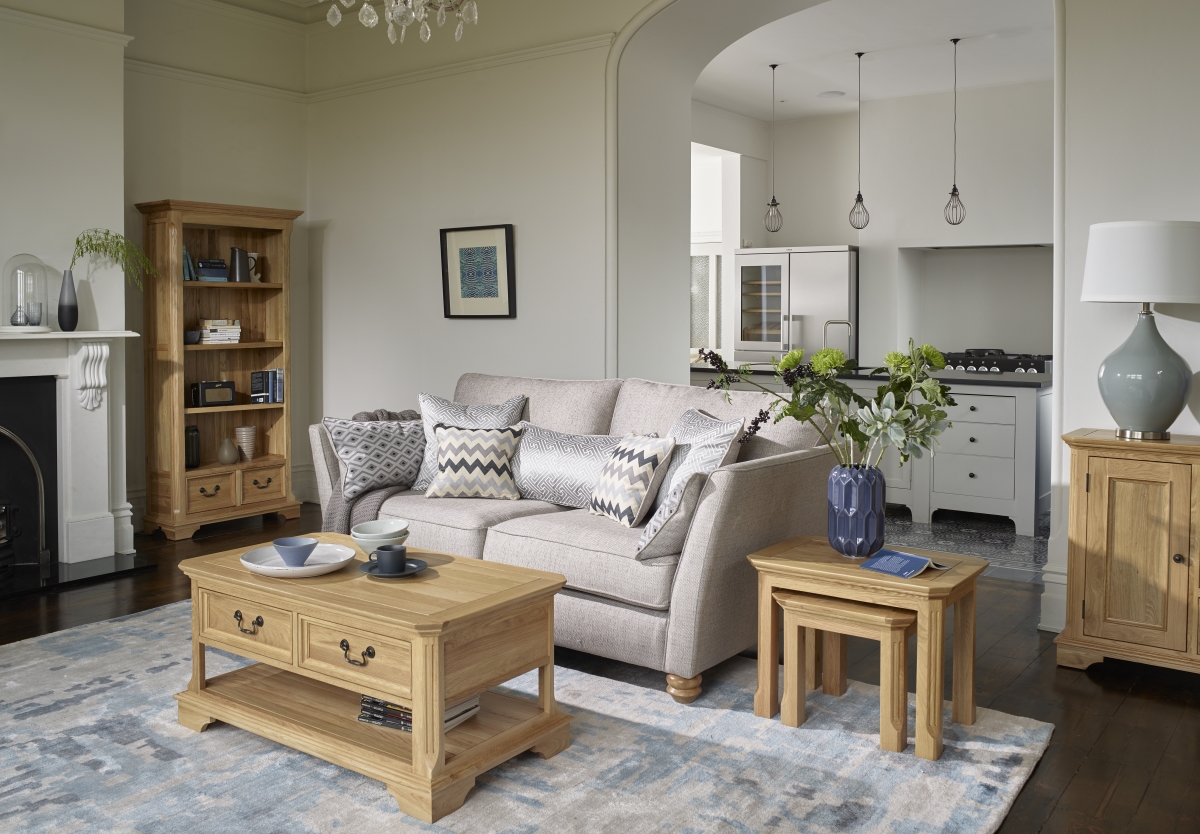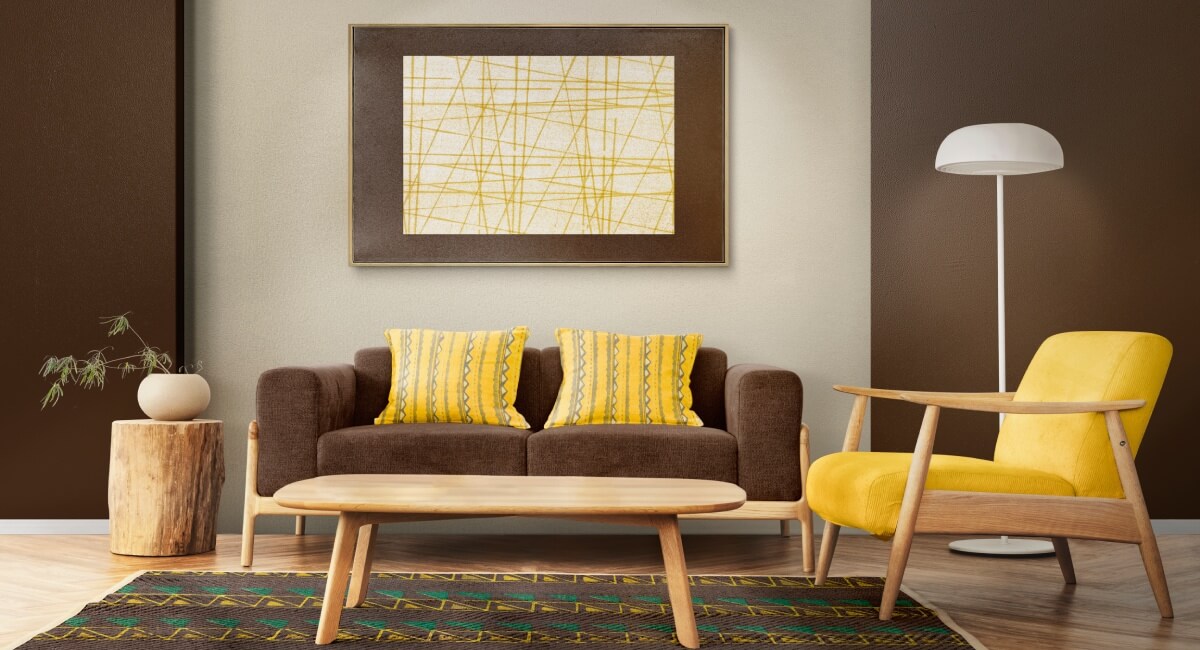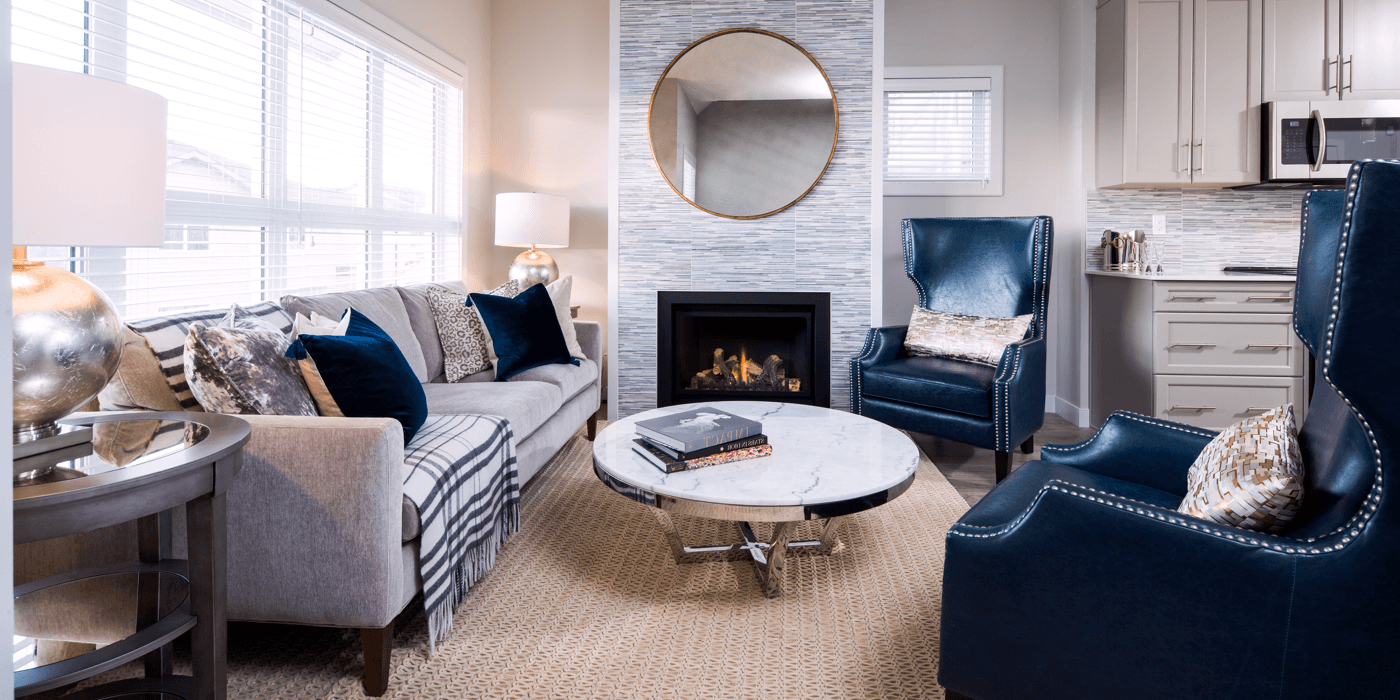Understanding Your Needs and Style

Your living room is the heart of your home, a space for relaxation, entertainment, and connecting with loved ones. Choosing the right furniture is crucial to creating a comfortable and inviting atmosphere that reflects your unique personality and lifestyle.
Determining Your Living Room's Functionality
The first step in selecting furniture is to define how you envision using your living room. Consider your priorities:
- Entertainment: If you frequently host movie nights or game sessions, prioritize comfortable seating, a large TV, and a media console for storage.
- Relaxation: If your living room is primarily a space for unwinding, consider plush armchairs, a cozy sofa, and soft lighting.
- Socializing: If you enjoy entertaining guests, a spacious layout with comfortable seating arrangements and a coffee table for drinks and snacks is essential.
By understanding your primary use for the living room, you can select furniture that supports your lifestyle and makes the space truly functional.
Measuring and Planning Your Space: Tips For Choosing The Right Furniture For Your Living Room
Before you start browsing furniture stores, it's crucial to understand the dimensions of your living room and plan how you want to arrange your furniture. Accurate measurements and a clear layout will prevent you from buying furniture that's too large or small for your space, leading to a well-balanced and functional living room.
Measuring Your Living Room
Start by measuring the length and width of your living room, taking into account any alcoves, doorways, or other features that might affect furniture placement. Use a measuring tape and record the measurements in a notebook or on a piece of paper. You should also consider the height of the ceiling and any obstructions, such as beams or chandeliers, that might limit your furniture choices.
Creating a Floor Plan
Once you have the measurements, you can create a floor plan of your living room. This can be a simple sketch or a more detailed drawing using graph paper or a dedicated floor plan software.
- Sketching: A simple sketch can be enough to visualize furniture placement and traffic flow. Use squares or rectangles to represent furniture pieces and draw lines to represent walls and doorways. You can use different colors or symbols to represent different types of furniture, such as sofas, chairs, tables, and storage units.
- Floor Plan Software: Several online and offline floor plan software options are available that allow you to create detailed floor plans with precise measurements and furniture models. These programs can help you experiment with different furniture arrangements and visualize how the room will look with different furniture pieces.
Considering Traffic Flow and Layout
When planning your furniture arrangement, consider the traffic flow in your living room. You want to create a layout that allows for easy movement and avoids bottlenecks or cramped spaces.
- Entry and Exit Points: Ensure that there is a clear path from the entryway to other parts of the room, allowing people to move freely without bumping into furniture.
- Focal Point: Consider the focal point of your living room, which could be a fireplace, a large window, or a piece of artwork. Arrange furniture to create a flow towards the focal point and encourage people to gather around it.
- Furniture Grouping: Group furniture together to create conversation areas or seating zones. This helps to create a sense of intimacy and encourage social interaction.
- Furniture Placement: Avoid placing furniture too close to walls or doorways, as this can make the room feel cramped. Allow for enough space around each piece of furniture for comfortable movement and circulation.
Choosing the Right Sofa

The sofa is the centerpiece of your living room, so choosing the right one is crucial. It should be comfortable, stylish, and suit your lifestyle.
Sofa Styles
The style of sofa you choose will depend on the overall aesthetic of your living room. Here are some popular sofa styles:
- Sectional Sofas: These are great for larger living rooms and offer plenty of seating space. They come in various configurations, allowing you to customize them to fit your space. Sectional sofas are ideal for families or those who entertain frequently.
- Loveseats: Loveseats are smaller than standard sofas and perfect for cozy living rooms or small apartments. They are ideal for couples or individuals who want a comfortable spot to relax.
- Chesterfield Sofas: Known for their elegant and timeless design, Chesterfield sofas feature deep button tufting, rolled arms, and a high back. They add a touch of sophistication to any living room.
- Modern Sofas: Modern sofas are characterized by clean lines, minimalist designs, and neutral colors. They are perfect for contemporary living rooms and offer a sleek and sophisticated look.
- Traditional Sofas: Traditional sofas are often characterized by ornate details, such as carved wood frames and floral upholstery. They are perfect for classic living rooms and create a sense of warmth and elegance.
Sofa Size and Shape
The size and shape of your sofa should be chosen based on the dimensions of your living room.
- Measure your space: Before you start shopping, measure the length, width, and height of your living room. Consider the placement of other furniture, such as coffee tables and chairs, to ensure you have enough space for walking around.
- Choose the right shape: The shape of your sofa will also affect the layout of your living room. For example, a sectional sofa is a great option for a large living room, while a loveseat is more suitable for a smaller space.
- Think about traffic flow: Ensure you have enough space to move around your sofa comfortably. If you have a lot of foot traffic, you may want to choose a sofa with a smaller footprint.
Comfort, Fabric, and Upholstery
Comfort, fabric, and upholstery are crucial considerations when choosing a sofa.
- Comfort: The comfort of your sofa is paramount. Sit on different sofas to find one that feels comfortable for you. Consider the firmness of the cushions, the depth of the seat, and the height of the back.
- Fabric: The fabric of your sofa should be durable, easy to clean, and match your lifestyle. Leather is a popular choice for its durability and elegance, while fabric sofas offer a wide range of colors and patterns. Consider the texture and feel of the fabric to ensure it is comfortable for you.
- Upholstery: The upholstery of your sofa will affect its durability and appearance. Choose an upholstery that is resistant to stains and wear and tear, especially if you have pets or children. Consider the color and pattern of the upholstery to ensure it complements your living room decor.
Selecting Complementary Seating

Choosing the right complementary seating for your living room can elevate the overall aesthetic and functionality of the space. By carefully selecting pieces that complement your sofa and reflect your personal style, you can create a welcoming and comfortable environment for relaxation, socializing, and entertaining.
Understanding Different Seating Types
Different types of seating serve distinct purposes and offer varying levels of comfort and functionality. It's important to consider the specific needs of your living room and the overall design aesthetic when choosing complementary seating.
- Armchairs: Armchairs offer a cozy and comfortable seating option for individuals. They come in various styles, from classic to modern, and can be upholstered in a range of fabrics and colors. Armchairs can be placed strategically around the room to create conversation areas or provide a dedicated reading nook.
- Accent Chairs: Accent chairs are designed to add a pop of style and personality to a living room. They can be unique in shape, size, or color, and often serve as statement pieces. Accent chairs can be placed near the sofa or in a corner to create visual interest.
- Ottomans: Ottomans are versatile pieces of furniture that can serve as footrests, extra seating, or even coffee tables. They come in various sizes and shapes, and can be upholstered in a variety of fabrics and colors. Ottomans can add a touch of softness and comfort to a living room.
- Poufs: Poufs are similar to ottomans, but are typically smaller and less structured. They are often made of soft materials like fabric or leather, and can be used as extra seating, footrests, or decorative accents. Poufs can add a touch of bohemian or eclectic style to a living room.
Choosing Complementary Seating
When choosing complementary seating, it's important to consider the following factors:
- Style: The style of your complementary seating should complement the style of your sofa and the overall aesthetic of your living room. For example, if you have a modern sofa, you might choose modern armchairs or accent chairs. If you have a traditional sofa, you might choose traditional armchairs or ottomans.
- Comfort: The comfort of your complementary seating is important, as you'll be spending time relaxing in it. Consider the size, shape, and cushioning of the seating. You may also want to consider the height of the seating, as it should be comfortable to sit in for extended periods.
- Color and Pattern: The color and pattern of your complementary seating should complement the color and pattern of your sofa and the overall color scheme of your living room. You can choose complementary colors, contrasting colors, or even bold patterns to create visual interest.
- Functionality: Consider the functionality of your complementary seating. Will it be used for reading, socializing, or simply as a decorative accent? Choose seating that meets your specific needs and lifestyle.
Creating a Focal Point

A focal point is a key element in your living room that draws the eye and anchors the overall design. It creates a sense of visual interest and balance, guiding the flow of the room. It's the first thing people notice when they enter the space, and it sets the tone for the entire room's aesthetic.
Types of Focal Points
Focal points can be created using various elements, each adding its own unique character to the living room.
- Fireplaces: A traditional and timeless focal point, fireplaces exude warmth and create a cozy atmosphere. Their presence immediately draws attention and makes the living room feel inviting.
- Large Artwork: A striking piece of art, whether a painting, sculpture, or tapestry, can instantly become the focal point. It adds a touch of personality and sets the mood for the room.
- Statement Pieces: A statement piece is any piece of furniture that stands out due to its unique design, size, or color. It could be a grand armoire, an oversized chandelier, or a vintage sofa.
- Television: While often overlooked, the television can also be a focal point, especially if it's a large screen or mounted prominently on the wall.
- Architectural Features: Unique architectural elements, such as a bay window, vaulted ceilings, or exposed brick walls, can naturally become the focal point of the room.
Positioning Furniture to Enhance the Focal Point
The placement of furniture plays a crucial role in highlighting the focal point.
- Facing the Focal Point: Arrange seating so that it faces the focal point. This creates a natural flow of movement and encourages conversation around the central element.
- Creating Visual Balance: Place furniture around the focal point in a balanced way. This can involve using symmetry or asymmetry to achieve a visually pleasing arrangement.
- Using Negative Space: Don't overcrowd the area around the focal point. Leave some negative space to allow the focal point to breathe and stand out.
Adding Storage and Functionality
A well-designed living room is not just about aesthetics but also about functionality. Incorporating storage solutions seamlessly into your living room design can create a more organized and efficient space. This section will guide you through various storage options and tips for incorporating them into your living room.
Choosing the Right Storage Solutions
When selecting storage solutions, consider your specific needs and aesthetic preferences. Here are some factors to consider:
- Storage Needs: Determine the types of items you need to store, such as books, media devices, blankets, or games. This will help you choose storage solutions with appropriate capacity and compartments.
- Style: Opt for storage solutions that complement the overall style of your living room. Choose materials, finishes, and designs that match your existing furniture and décor.
- Space: Measure your available space carefully to ensure the storage solutions fit comfortably and don't overwhelm the room.
- Budget: Storage solutions come in a wide range of prices. Set a budget and stick to it, but don't compromise on quality and functionality.
Incorporating Storage into Your Living Room Design
There are numerous ways to incorporate storage into your living room design while maintaining a cohesive and stylish look:
- Coffee Tables with Drawers or Shelves: These offer a practical solution for storing remotes, magazines, and other small items while maintaining a stylish focal point in the room.
- Media Consoles: These units are designed for storing media devices, gaming consoles, and other electronics, keeping them organized and easily accessible.
- Shelving Units: Open or closed shelving units provide versatile storage for books, decorative items, and plants, adding visual interest and functionality to your living room.
- Ottomans with Storage: These multifunctional pieces can serve as extra seating and provide hidden storage for blankets, pillows, or games.
- Wall-Mounted Storage: Utilize vertical space by installing wall-mounted shelves, cabinets, or baskets for storing books, artwork, or other items.
Table of Storage Solutions
| Type | Description | Benefits |
|---|---|---|
| Coffee Tables with Drawers or Shelves | Provides storage for remotes, magazines, and other small items. | Offers convenient storage while maintaining a stylish focal point. |
| Media Consoles | Designed for storing media devices, gaming consoles, and other electronics. | Keeps electronics organized and easily accessible. |
| Shelving Units | Provides versatile storage for books, decorative items, and plants. | Adds visual interest and functionality to the living room. |
| Ottomans with Storage | Multifunctional pieces that serve as extra seating and provide hidden storage. | Offers both seating and storage in a compact design. |
| Wall-Mounted Storage | Utilizes vertical space by installing wall-mounted shelves, cabinets, or baskets. | Maximizes space utilization and keeps items organized. |
Accessorizing and Finishing Touches
Accessorizing is the final step in creating a living room that reflects your personality and style. These finishing touches can transform a space from ordinary to extraordinary, adding warmth, personality, and a sense of completeness.
Choosing the Right Accessories
The right accessories can tie together your living room's design elements and create a cohesive look.
- Throw Pillows: Throw pillows add texture, color, and comfort to your seating. Choose pillows in different sizes, shapes, and patterns to create visual interest. For a cohesive look, select pillows that complement the colors and patterns of your sofa and rugs.
- Blankets: Throw blankets provide warmth and add a touch of luxury to your living room. Consider textures like wool, cashmere, or faux fur for a cozy feel. Choose colors and patterns that complement the overall design scheme.
- Rugs: Rugs define areas within your living room, anchor furniture arrangements, and add warmth and softness to the floor. Select a rug that complements the colors and patterns of your furniture and accessories. A large rug can unify the space, while smaller rugs can highlight specific areas.
- Artwork: Artwork adds personality and visual interest to your living room. Choose pieces that reflect your taste and complement the overall style of the space. Consider a variety of sizes and shapes to create a balanced display.
Incorporating Lighting, Tips for choosing the right furniture for your living room
Lighting plays a crucial role in creating the desired ambiance and functionality in your living room.
- Ambient Lighting: Ambient lighting provides general illumination for the entire space. Chandeliers, pendant lights, and ceiling fixtures can provide this type of lighting. Consider using dimmable bulbs to adjust the level of brightness.
- Task Lighting: Task lighting provides focused illumination for specific activities, such as reading or working. Table lamps, floor lamps, and sconces can be used for this purpose. Choose bulbs with a warm white color temperature for a cozy feel.
- Accent Lighting: Accent lighting highlights specific features in your living room, such as artwork or architectural details. Use track lighting, spotlights, or recessed lighting to showcase these features. Consider using a variety of light sources to create visual interest and depth.
FAQ Section
Tips for choosing the right furniture for your living room - What is the best way to arrange furniture in a small living room?
In a small living room, prioritize functionality and maximize space by using multi-purpose furniture like a sofa bed or a coffee table with storage. Arrange furniture around a focal point, like a fireplace or a large window, to create a sense of flow and avoid overcrowding.
How do I choose the right rug for my living room?
Consider the size and shape of your room when selecting a rug. Aim for a rug that's large enough to accommodate most of the furniture, creating a cohesive and inviting space. Choose a rug that complements the overall color scheme and style of your living room, while also adding texture and warmth.
What are some essential accessories for a living room?
Throw pillows, blankets, and artwork are great ways to add personality and comfort to your living room. Choose pieces that complement your furniture and overall style, and experiment with different textures and patterns to create visual interest.
